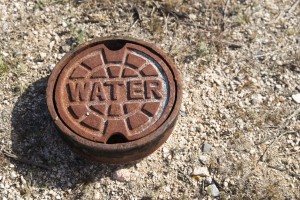People “should not be forced to live on property with brown lawns, golf on brown courses or apologize for wanting their gardens to be beautiful. We pay significant property taxes based on where we live, and, no, we’re not all equal when it comes to water.”
─Steve Yuhas, Homeowner, Rancho Santa Fe, California
It is an interesting ethical debate. Do people who pay more in property taxes get to use more water than people who don’t?
California is in the middle of a terrible drought. No matter what happens from this time forward, issues such as water rights and water costs are almost guaranteed to undergo change.
According to an article that appeared in The Washington Post by Rob Kuznia (June 14, 2015) entitled: Rich Californians balk at limits.
“We’re not all equal when it comes to water,” the article states. “we see that in the wealthy communities of Southern California there is debate over who should get access to more water, and who should get less.”
The article reiterates several details about a community that is emblematic of the debate, Rancho Santa Fe:
“In April, after Gov. Jerry Brown (D) called for a 25 percent reduction in water use, consumption in Rancho Santa Fe (a wealthy Southern California community) went up by 9 percent…On July 1, for the first time in its 92-year history, Rancho Santa Fe will be subject to water rationing.”
Here are some other details:
“Top water users such as Rancho Santa Fe are required to cut consumption by 36 percent. Other areas in the 36-percent crosshairs include much of the Central Valley, a farming region that runs up the middle of the state, and Orange County, a ritzy Republican stronghold between San Diego and Los Angeles.”
This is serious stuff, and the ethical debates are real. The problem is that the debate seems to center on who to vilify, rather than what to do about the problem.
The War on Suburbia
Several of the homeowners in Southern California are calling the water rationing a “War on Suburbia.” Those who are paying as much as $800 per month in water bills feel they should be able to continue to nourish their lawns and flower gardens. People on the other side of the debate are “outraged” by the conspicuous consumption.
To be fair, there are many upper income homeowners who are removing high-water demanding plants and replacing those plants with drought tolerant varieties. Many other homeowners are simply letting their lawns go brown.
In the quote shown above, I must take exception to lumping the farmland in the Central Valley with the lawns of movie tycoons and industrialists. The farmland of the Central Valley is one of the breadbaskets of the nation. While tomatoes, peppers, grapes and even the (now) controversial almond are aesthetically pleasing, they should not be lumped in with petunias and geraniums. And while the quote includes the “Republicans of Orange County,” I’ve no doubt more than a fair share of Democrats are also playing it loose with their water sprinklers!
Therein lies the ethical problem.
It is very easy to target and “water shame” those who use California’s precious water to irrigate lawns, rose gardens and horse pastures. Many are quite upset when they drive by a home and see green instead of brown, but where were these “shamer’s” a decade ago? Where were they when California’s environmental community warned everyone that this could happen (and I remember it well)? People laughed at them like they were crackpots.
Before we label every person of wealth in Southern California as a greedy squanderer, perhaps it might be a good idea to understand everyone’s role in this potential catastrophe.
Rational, long-term programs
Water has been an issue in California since before the 1920s. Those who controlled the water had immense power – and still do. The scarcity of water has accompanied California’s growth. However, if we need to have an ethical debate in regard to water rationing, let’s not begin and end the debate with Barbara Streisand’s lawn.
Let’s start with the millions upon millions of gallons wasted in activities from car washes to water parks; swimming pools and water features. That is just the start. It involves new technology for irrigation, plumbing, gray water recycling, and washing machines and on and on.
Recent weather stories show the weather patterns shifting over the next year, seeming to favor higher than normal rainfall back to California. Would such a pattern immediately result in a relaxation of the rules or will there be more of an effort to build new reservoirs and storage facilities?
Should there be stiffer penalties for those who use more than their allotted share of water? Yes. Are they to blame for all of Southern California’s water woes? Absolutely not.
In the end, the ethical burden to use less water during this severe (and possibly continuing) drought is on everyone in California.



